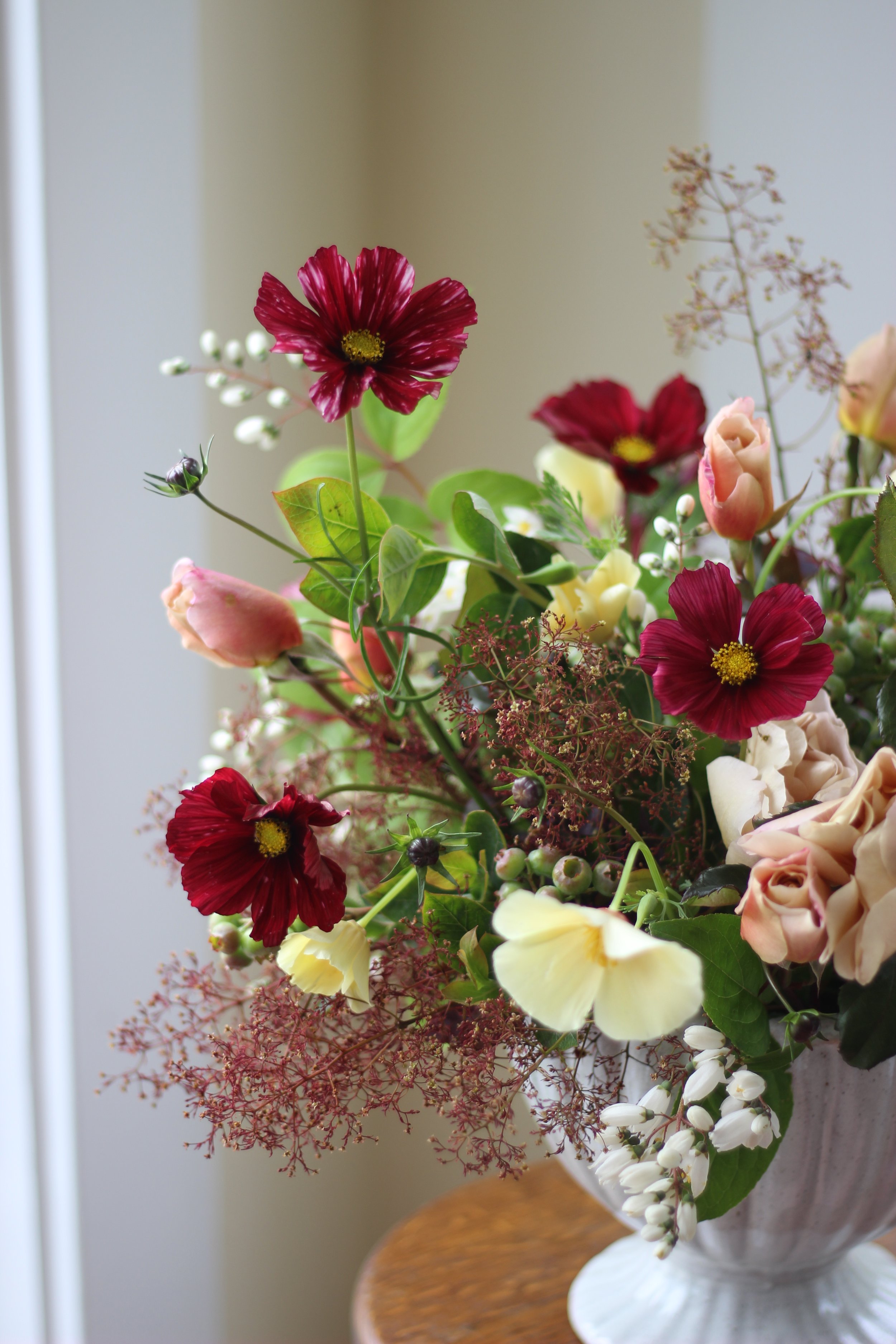What’s the deal with floral foam?
What is it? Why is it bad? How do I avoid it? What’s the alternative?
Have you ever received an order from a 1-800 flower shop? One of those arrangements in a smiley face vase with flowers sticking out the top? Did you notice what was inside the vase? Yep, that nasty green styrofoam stuff that’s all crumbly and yucky. That’s floral foam.
What is it?
Floral foam is made from non-biodegradable plastic materials. It is designed to hold water and keep flowers hydrated and in place, but its environmental consequences are horrendous. When discarded, floral foam can take centuries to break down in landfills, contributing to plastic pollution.
Additionally, during its production, floral foam emits harmful volatile organic compounds (VOCs) that can contribute to air pollution and harm both human health and the environment. The manufacturing process also involves the release of greenhouse gases, further exacerbating climate change.
As floral foam breaks down over time, it crumbles into tiny microplastic particles that can easily make their way into water, harming aquatic life. These microplastics can also end up in the soil, affecting plants and ecosystems. The long-term consequences of this microplastic pollution are still being studied, but it is undoubtedly an environmental concern.
Floral foam contains various chemicals and additives, including formaldehyde, which is a known carcinogen, and phenol, both posing health risks to those who come into contact with it. Florists and hobbyists who handle floral foam regularly may be exposed to these chemicals, increasing their risk of health problems.
What do I do with used floral foam?
Are you a hobbyist that has some in their craft corner? A venue responsible for disposing it after an event? A florist who uses it regularly? Regardless of why you have floral foam on your hands, it’s really important that it is disposed of properly.
Note: floral foam should be disposed of in accordance with local regulations.
Floral foam is a plastic that cannot be recycled. It needs to be sent to a landfill and not places in the compost, garden, or any natural environment. Additionally, any flowers, foliage, or natural product used with floral foam should never be composted and put with green waste.
Water containing floral foam should not be placed down the drain. Pouring water that is contaminated with floral foam directly into a storm drain is the same as putting it straight into the ocean. (Poor fishies.)
According the Sustainable Floristry Network, the best way to dispose of water that has foam in it “is to pour it through a tight weave fabric such as an old pillowcase to capture as many of the foam fragments as possible … best environmental practice would see this strained water poured into a hole in the ground or a garden to limit movement through the environment, but never the water system. However, it is important to remember that those plastic fragments will remain in that hole for an indefinite period of time.”
How do I avoid it?
Make a commitment. Clients, venues, and other event professionals can make a commitment to a “no floral foam” policy.
Create foam free! Easier said than done, but there are tons of resources to design beautiful, foam free designs. Here are a few of my favorites:
Invest in an online or in person course that specializes in sustainable floristry. I trained with Tallulah Rose Flower School!
Check out Sustainable Floristry Network for loads of sustainable resources
How do you at Twisted Bramble do things without floral foam?
Twisted Bramble was founded on designing florals in an environmentally conscious way. Having never used floral foam before, I have always been innovative with my mechanics. I use and reuse items like chicken wire, moss, and frog pins.
Do you have an easy swap for those wanting to try it out?
Instead of foam, try wet sphagnum moss wrapped tightly in chicken wire. Secure it to the structure with double sided velcro instead of zip ties!




